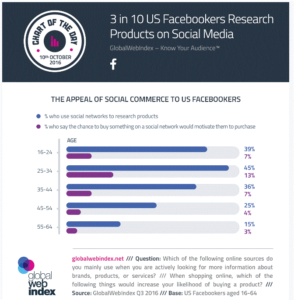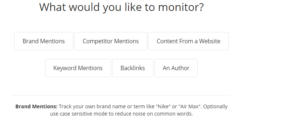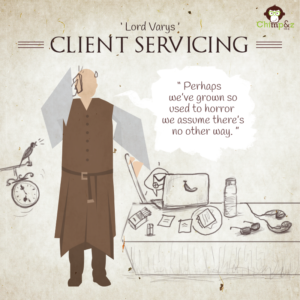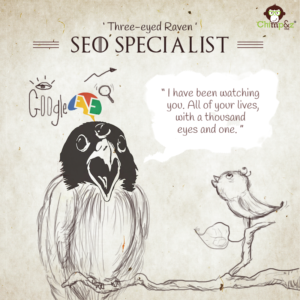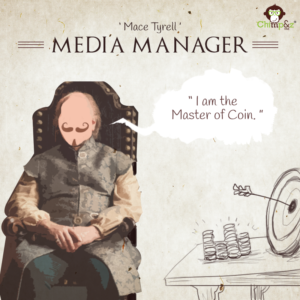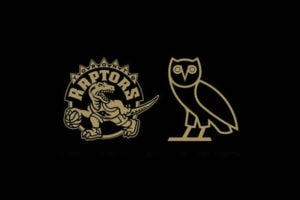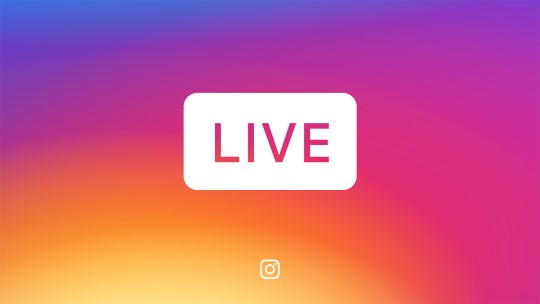
Instagram Live Stories have gone, well, live.
Following in the footsteps of Meerkat, Periscope and Facebook Live, Instagram Live now offers anyone in the world another platform to livestream their DJ set, run, make up tutorial, talk…. etc.
As NextWeb put it, Instagram is now a “one-stop service for all your social photo and video publishing needs”. While that sounds delightful in quote form, what does this actually mean for the app itself and the way people use it?
What was once a clean, aspirational experience of scrolling through a feed of carefully curated images has developed into a world of conflicting forces. You’re now greeted by a choice of viewing Live Stories, delving into your following’s pseudo live Stories or scrolling through the feed; all of which are now interspersed with ads.
There is a growing feeling amongst the Instagram community that the feed is being neglected due to people’s use of Stories. A behaviour that has shifted the tone of the Instagram experience. The platform has moved away from a focus on curated, clean and beautiful moments to that of real life; a messy array of intrigue, excitement and boredom.
While regular folk migrate from Snapchat to Instagram and begin to use Instagram as a “one stop service” it’s imperative brands adapt their strategies to continue successfully thriving on the platform. An approach that reflects the platform’s fractured state would be to segment your Instagram strategy into one with many faces; treating the feed, Stories and Live as their own separate entities. One thing that remains true with Instagram (and other social channels) is that if you create something amazing, people will come.
With the newly announced addition of Facebook Stories you can be sure that we haven’t seen the end of the debate around Live and Stories. Stories seem to be the key that unlocks the castle at the current moment in time for the different social channels, however how much live streaming plays a role in that will remain to be seen.
As JME recently said, it’s all becoming a bit similar.
“Facebook, Instagram & Snapchat Live, Stories & Filters.
Might as well merge offices & make one app.
“Chat Instaface”
Safe.”
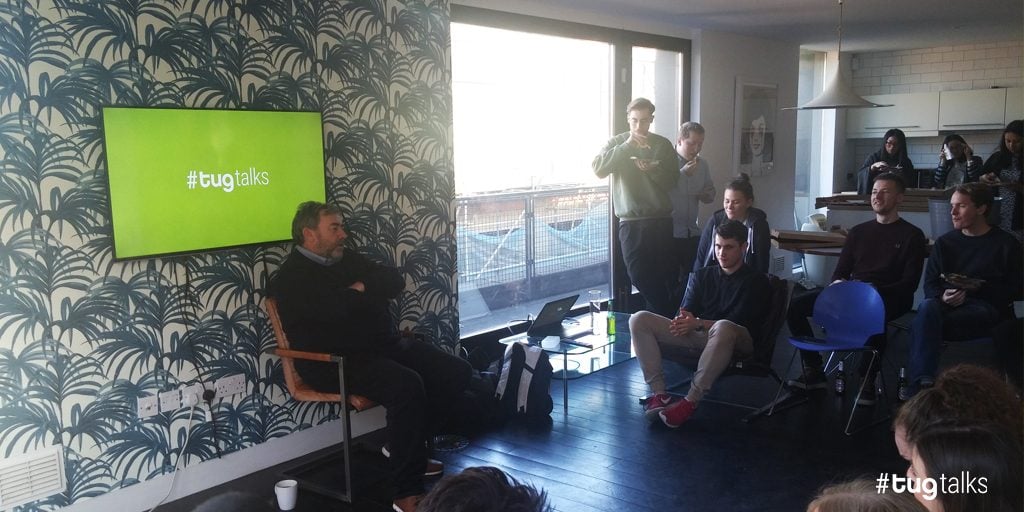
“As an industry, I don’t think we fully understand it; how to grasp it yet:” Jonathan on the implications that social media has had on the broadcast industry to date, a theme discussed on Friday.
Tug Talks 2017 was launched by legendary sport and entertainment broadcaster, Jonathan Pearce. Joining us fresh from the Robot Wars studios, Jonathan took us on a journey through his career as well as notable and significant changes to the modern television industry.
Jonathan charmed us with brilliant anecdotes about his time spent amongst the England set-up at the 1990 World Cup in Italy. He also had plenty of stories about the players and managers he’s met throughout the years, including the late World Cup-winning captain Bobby Moore – which was a real touching moment.
But it’s his journey into television commentary where Jonathan began to experience the industry’s biggest changes, most notably the growth of social media and it’s impact on modern broadcasting. “We are coming to an era now where social media is so strong, is so incredibly powerful”, Pearce referenced in discussion of social media’s often brutal and unforgiving nature to those in the public eye. “At the moment a lot of TV chiefs shape their programmes to fit in with the mood of social media.”
Match of the Day now uses tweets from players within their broadcast, often featured to spark discussion amongst the show’s pundits. “For years and years and years you wouldn’t hear from players really, you would hear a banal media coached sound bite which is rubbish, it doesn’t tell you anything.” Social media has allowed the stars of the sporting world to communicate with their fans and the media in a new way, which has started to be utilised regularly in modern sport and entertainment broadcasting.
There’s no question that social media has had the greatest impact on the way in which broadcasters and journalists operate today, as millions of users can now be utilised as sources for stories and content. “Those sources need to be utilised but they also need to be policed. They need to be checked as all sources do.”
Originally from Cornwall, Jonathan and his family moved to Bristol where his career in sports broadcasting would later begin, “the biggest dream living in Cornwall back then was getting away from Cornwall.”
In 1972, Jonathan was introduced to the club’s video analysis system, which helped the club to examine overall team performances and tactics – the first of its kind anywhere in Europe. “I was exposed to gantries, TV techniques, filming and editing, falling in love with the game tactically” – later leading to his debut broadcasting position at BBC Radio Bristol in 1980, whilst at university. “I started covering all of their matches and travelling around the country,” – His first professional opportunity as a broadcaster. He then worked at Radio West before working for Southern Sound, later returning to Radio West before working at BBC Radio Two.
Jonathan was later approached by Matthew Bannister to work for radio start-up Capital Radio Sport, which later became Capital Radio Gold. “I thought that this is where I can really do what I want to do,” Pearce explains as he aimed to use this opportunity to bring a fresh feel to the delivery of sports reporting. This is where Jonathan’s career began to excel and evolve, as he travelled around the globe to World Cup finals and European Championships.
We would like to thank Jonathan for taking the time out his schedule and joining us for the first Tug Talks of 2017, one that will live long in the memory for the team here at Tug.
Since then already 30% of the US Facebook users declare than they turn to social media when they are researching products online.
(The graph is a courtesy of Global Web Index http://bit.ly/2dZsx5S)
Since its launch in the beginning of October, Facebook marketplace has already been called “friendlier Craigslist” and caused trouble to Facebook, forcing it to apologise publicly. The reason behind being the fact that for couple of hours the system failed to filter out all illicit offers. You can imagine what was put out for sale.
But Marketplace is not only just another step in Facebook’s never ending journey in increasing its influence; it can be the first tool to bridge the gap between research and purchase on social media.
The platform does not yet support a native transaction system, and only 6% say that being able to purchase directly via social media would encourage them to buy online; however, 8 in 10 US Facebook users say they have purchased a product online last month, making it very clear why Facebook has decided to move in the direction of social commerce.
At the moment Marketplace is only available as mobile app for Android and iOS, although Facebook has already announced that they will make it available for the web shortly.
Narrowly focused content is content that serves only a specific audience or role within the broader strategy. Having a narrowly focused content strategy can sometimes be the right choice but in most situations the broader, the better. To better understand the concept I will first introduce the 4 main roles of content marketing.
- Directly converts customers
Hopefully, reach new audiences so that we can capture that new audience or a segment which will turn out to be great customers for us or might be influential to our customers. What we are trying to achieve with this type of message, is that we are the experts. - Earns press, amplification and links
Make sure more people aware of us, turn that into higher click-through rates because people are familiar with us already. Retargeting and remarketing play a key role, so that we have more brand credibility. The message of these pieces of content is that we are a go-to source for information. - Reaches a broad new audience
So we can rank higher, so we can reach new audiences, so we get influencers on our side. That makes the promotion of our content much easier. - Grows brand awareness and authority
Convinces people to buy from us, convinces them that our products or our services or our knowledge is the best in our field. A message of trust and the objective of expanding our horizons.
These 4 roles of content can overlap when content is being written and published, but most of the content you’re going to produce is going to have a hard time doing anything more than maybe one or two of these.
So why is having a broader focus important?
- If you concentrate solely on directly converting customers you are going to have a very hard time fighting the competition. Content that’s only hyper-specifically targeting directly converting customers means high competition. It’s often a competitive advantage to actually be a little bit broader. Go out of the comfort zone and try and attract new audiences.
- You could be ignoring great link opportunities from websites and press/blogs. With a broader focus or just a broader appeal in general, coverage is an opportunity. It could be that you’ve only written about your customers’ problems when if you had written about the problem a little more generally, you might have had the chance to reach bloggers.
- You could be missing out on potential customers/influencers outside of your ‘comfort zone’. Any narrowly focused piece of content will have a tough time making itself any bigger than it is. Content that’s more broadly-focused, especially if it does well, is going to help expand this sphere so that you reach more people
In terms of creating a content strategy instead of making solely narrowly focused content, think broader. First off…
- Determine content goals with your team/manager/client
- Distribute the broad versus narrow versus hyper-specific content efforts, making sure there is a good mixture
- Establish cadence/channels/promotion efforts that are going to fit the goal and the target audience
- As always success can be determined only when you use the right metrics to measure your progress against these goals. so it is important to get these right to measure the effectiveness of your content.
Most SEO experts know that brand mentions of your clients are a good way to get high value links. Unfortunately, we often forget to use this tactic because it can be a bit fiddly in terms of actually identifying brand mentions in a reactive and quick way. Here are a few ways to set up brand alerts to help you stay on top of your brand mentions on the web.
1. Google Alerts
Google Alerts can be set up using your Gmail account and will send a notification to you when your client/brand or keyword has been mentioned on the web. You can receive your notifications daily or on a weekly basis. Once you notice that your client/brand has been mentioned in an article for example, you can approach the publication and ask for a link to your client`s website.
The set us is extremely easy and looks like this:
Simply enter your brand name or keyword and create the alert.
A problem with Google Alerts that it has now become a little bit unreliable and hit and miss so it is recommended to not use this as the only tool to monitor mentions of your brand on the web
2. Buzzsumo
BuzzSumo, the content marketing platform allows you to set up alerts as well as well as see the social mention count of the content straight away which can help you make a quick decision on which type of content is worth going after in order to get a link and which isn’t. After all, social media mentions likely factor into Google`s ranking algorithm as Facebook and Twitter are crawled by search bots.
Setting up an alert on Buzzsumo is easy:
- Go into the ‘Monitoring’ feature on BuzzSumo
- You can set up a new alert by clicking on ‘Create new alert’ which will bring up the following options:
- Choose the type of alert you would like to receive
- Create alert to receive alerts
BuzzSumo’s interface as shown above allows for more detailed searches on a variety of types of alerts such as ‘backlinks’ which is a handy alert if you would like to monitor earned links to a piece of content for example.
The last thing you will have to do is to approach the publication/influencer that mentioned your brand. You may have to look for their contact details or even approach the general outlet if it is a newspaper for example and ask to be directed to the relevant person that mentioned your brand.
This approach works well for brands that are already a bit better known and get mentioned on a regular basis, however, once you start putting out content about your brand, chances are it will get picked up by other sources than the ones you actively approach yourself which is where brand alerts come in handy.
According to Group M, one in four people are genuinely more trusting of a chatbot with their personal information than a human. I know as well as you do that we are living in a (very) digital age but should we draw the line when it comes to human/AI interaction? I’ll hold my hands up and admit I often find it easier to ask online. Last week I went out of my way to book a table online as opposed to calling the pub, not because my palms get sweaty at the sheer thought of speaking with a stranger, but merely because it was the first thing to come to mind. The digitalisation of our lives has led to a shift in how we think and resolve. We want the quickest and easiest solution. No queues please!
The ‘Humanity in the Machine’ report, which Group M ran, found that 63% of people would consider communicating with a chatbot to contact a business or brand. Fair enough. The report also found that 48% of us also feel it’s “creepy” for a machine to pretend it’s a human, but the reality is that chatbots are becoming hugely popular in digital marketing, and it’s vital that brands embrace becoming an “experience business”. Facebook recently updated its Messenger features, meaning chatbots can now link to an account to make personalised suggestions. “Oh you liked that book, right? How about your read THIS book? No, don’t worry, you don’t need to go look for it, we’ve done that for you!” Simple, easy and effective. Move over redirecting, the chatbot age is well and truly in full swing. Read more about Messenger bots here.
The logic behind why so many brands and businesses are now turning to an AI-led customer service is due to ever-changing and ever-rising customer expectations. Brands must improve the experiences their customers endure in order to maintain customer trust and brand advocacy. Where social media gives the customer the driving seat, chatbots are allowing brands to (sort of) take back some of the control, even if it is through a creepy, fake human. Like it or not, this is the direction our online customer journey has taken and now is the time to embrace it. After all, who wants to wait in line in store? Just send that Tweet, sit back and let the digital magic happen.
Here is Tug’s insight into Bixby – Samsung’s intelligent voice assistant.
There are events taking place all over the world: agencies, brands, industry leaders and more are coming together to talk around social media issues. For example, from a quick browse of the global event hashtag #SMDay2016 on Twitter, I’m able to tune into a live Facebook stream from Ahmedabad about digital video in India, I can catch tweets from the Philippines about social star Sebastian Castro’s talk about how YouTube changed his life and I’m able to follow threads from all around the world (kind of speaks about the power of social for itself, doesn’t it?)
Interested in getting in on the action? Follow the hashtag #SMDay2016 on Twitter and Facebook, check out the events going on around the world and share your own story: how has social media made a personal impact on who you are?
And make a note in your diaries: Social Media Week, a worldwide event focussed on sharing media insights around social media’s influence in business, culture and society, is happening 12-16 September 2016. For those of you in London, events will happen at BFI Southbank and it will feature speakers from big names like National Geographic, Buzzfeed, Forbes and more. To learn more about the event and how you can get involved, click here.
Until then, a happy #SMDay to you all!
Chimp & Zinc, an India-based design agency, have morphed each of the show’s characters into advertising professionals.
Those busy scheming, with their fingers in many a pie…
Those omnipotent SEO team members, ruling over page 1…
Even those thrifty media moguls spending the crown’s coffers…
From client service to media manager, or the unfortunate intern, find yourself here.
Optimising your social media profile for SEO is an often underused tactic to drive more traffic to your social media profiles and help them appear in SERPs. However, you can implement some very quick and easy changes that will make your social media profile stand out from your competitors.
Here is a list of things you can do to help your social media profiles come out top in the SERPs:
- Optimise descriptions such as your Twitter bio for SEO: Use keywords and hashtags. Make sure you stick to under 150 characters so that your description is visible in SERPs. Your description is effectively a Meta description and will be regarded by search engines as such.
- Interlink all of your social media profiles with one another and make sure they are referenced correctly: If your Facebook profile is mentioned on your Instagram account for example and vice versa, it will help search engines establish relevance between your properties.
- Google+ is a platform that is no longer used as much as a few years ago, however, sharing your content will still have a beneficial effect on your rankings in Google.
- YouTube acts just like a search engine: make sure your descriptions are long and informative and your video is in the right category so users can find it more easily.
- Referencing your key landing pages on your Google+ page will do wonders for their ranking.
- Instagram is a great place for keyword optimisation. Use your keywords as hashtags but do not overdo this as it will look spammy.
- The Notes-Section in Facebook is a great section to share content. Many brands neglect this section but adding new content will mean that your profile is crawled by Google more often.
- Contact details such as address details and telephone numbers also help search engines to establish relevance and authority of your brand
Social Media Optimisation is a way for your SEO and Social teams to work together. Carrying out regular audits of your social profiles is important in order to make sure that they are relevant in terms of keywords for SEO.
Drake’s involvement with the team is apparent by just skimming through his Twitter and Instagram accounts. He will frequently post photos of himself enjoying a game court-side or hanging out with the players. This means that his 50 million followers (a number quickly growing) are being exposed to the Raptors on a daily basis. The power of social media marketing is pretty incredible! This alone is a fantastic way of promoting the brand, but it doesn’t stop here. There are also ‘Drake Nights,’ home games celebrating this partnership where every fan in the Air Canada Centre receives a free OVO/Raptors shirt. The immense popularity of the OVO record label and clothing brand has made these shirts a super-hot commodity; some selling for hundreds of dollars on eBay. On top of all of this Drake frequently mentions the team, or specific players in the case of Lou Williams (‘6 Man’), in his chart-topping songs. Being that he is arguably the biggest rapper/pop star in the world at the moment, this is a pretty big deal!
So what does all this good stuff ad up to? A team that fans want to watch, and players want to play for. A team with a firm grip on the pulse of modern pop culture. A team with tons of positive buzz and energy around it. A rejuvenated Toronto Raptors brand.
It feels good to be cool…even in Toronto!

